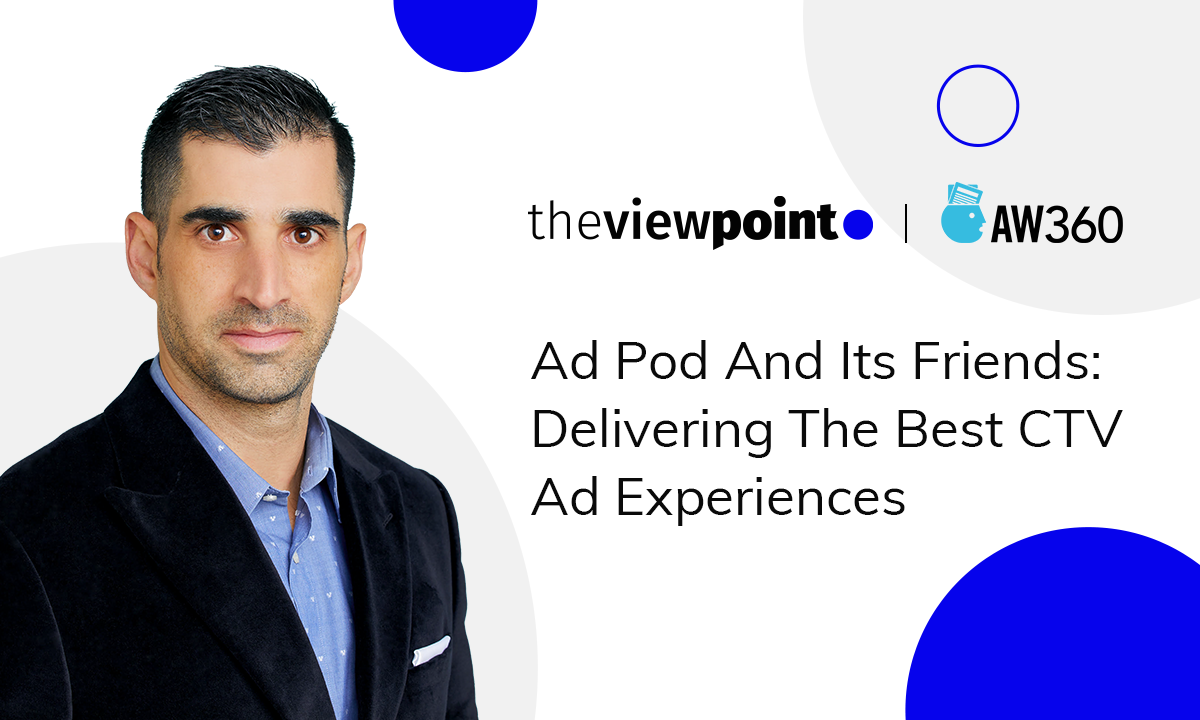
CTV Fragmentation: What You Need to Know
Internet-equipped television is no longer a new technology, and people have gotten used to watching content online. Game consoles first broke the ice, then streaming players like Roku followed in their footsteps, and now most TVs are capable of connecting to the Internet directly. With screens getting bigger, this presents more opportunities for streaming content. And connected TVs are getting more and more popular. Innovid says that by 2023, over 80% of all American households will have at least one CTV device. It would be a shame not to make use of this fact and not connect with your audiences, although there are nuances to consider. Big data introduces complexity and fragmentation to what once was a simple media transaction.
The Challenge
The plethora of apps, platforms and devices confuses not only viewers who face tough decisions at every stage, but also marketers who struggle to find one right way to reach and measure their audiences.
The only way publishers, who possess most of the Connected TV inventory, can get consumer data is by owning the distribution channel. Their content is spread across a variety of devices and apps, all of which process different amounts of data or demand different technologies. Consumers also like to watch their content on multiple platforms, depriving one single company of the chance to create an identity or a viewing footprint.
This is unlike Nielsen, which is the go-to company for linear TV stats. While onboarders can facilitate targeting, they are incapable of offering cohesive audience measurement. Nielsen has attempted to unify measurement and thus win over the market, but in reality, it has struggled with effective delivery, which is something ad servers could do.
At the same time, there is no easy way of controlling frequency across different publishers. If ads are purchased through Roku as well as directly via the publisher’s app, the same audience could be targeted twice. Ad servers, on the other hand, see all that data. The problem is that their agreements with buyers prevent them from sharing that data.
While fragmentation poses challenges for marketers hoping to scale their campaigns on CTV, it opens new doors for ad buyers.
Is There Anything Positive about Fragmentation?
Saving costs
Fragmentation isn’t necessarily a bad thing for everyone involved. Some parties are delighted to take this opportunity to save on advertising costs.
Fragmentation translates into the competition, which in turn results in lower prices. In a free market, ad dollars go to those offering the lowest rates. The fragmented CTV space favors the marketers who draw benefits from a buyer’s market.
Take social media, for example. When advertising came into being there, multiple platforms offered extensive reach for peanuts. Compared to linear television, marketers are presented with a unique opportunity to advertise to relevant audiences for a fraction of the price. Almost a quarter of polled marketers cite a cost-effective CPM as the prime reason for switching to CTV from linear. This bargain won’t last too long though – consolidation is inevitable, but for now, marketers still can enjoy this opportunity to scale quickly and cheaply.
Innovation is the new norm
Innovation is a “byproduct” of competition, which also brings prices down. In the highly fragmented CTV industry, providers are forced to find new ways to make their offerings stand out. Advertisers are drawn in by new technology, features and solutions that will help them get more for their money. For instance, completion rates are 8% higher for advanced creative ad experiences on CTV than for standard pre-rolls. There are no limits on creativity and pushing boundaries is usually rewarded with better results.
New legacy solutions
Thanks to CTV, broadcast TV advertisers have been able to review their legacy measurement solutions, turning to digital and taking advantage of opportunities to optimize their processes.
Marketers now enjoy the freedom to choose where to spend their budgets, whom they want to reach, as well as having innovative ways to measure ROI. This is evidenced by polls, which showed that the vast majority of marketers view media-specific ROI and objective measurement as key criteria.
The uniqueness of the platform and these useful tools all provide value-adds to CTV investment, especially as this can bring in extra dollars. The ability to produce detailed and transparent reporting is important, and the industry only wins from offering it to advertisers. While this fragmentation can confuse marketers, this transformation has provided a chance to dive deeper into the performance of their ads.
CTV Fragmentation by Device
Despite being Internet-equipped, connected TVs pose different challenges from mobile and desktop OTT distribution. As a result, CTV initiatives mainly deal with an internet-delivered video that is viewed on a wide TV screen.
These initiatives are:
Smart TVs streaming Internet video. For instance, LG or Samsung TVs.
OTT devices (Internet-connected) that plug into TVs and are connected to the Internet. These devices enable apps, as well as video streaming, on any television, even if it isn’t a “smart TV”. Roku, Chromecast and Apple TV are examples.
Game consoles: Playstation, Xbox and Nintendo effectively assume the role of a connected device, with their own ecosystems featuring apps that can also be used to stream video content to your TV.
Fragmentation Across Apps
Although mobile app development is dominated by two global players: Apple iOS and Google Android, the OTT app world is considerably more fragmented.
CTV applications exist within their own CTV ecosystems. These apps grant consumers the right to choose what content they want to view and interact with, and gives them access to a variety of channels. Unlike linear TV, there is no restriction on channels in terms of geography. Although CTV app development bears some resemblance to mobile, there are different nuances that need to be accounted for.
There are five app categories that allow content streaming:
vMVPDs apps (virtual multichannel video programming distributors): virtual here is opposed to non-virtual/standard cable TV providers. vMVPDs deliver TV content using the Internet, not cable or satellite. vMVPDs have a certain number of commercial minutes every hour to sell, according to their agreements with broadcast networks. These apps commonly include fewer channels than traditional subscriptions. vMVPDs broadcast the same live and on-demand TV, but over the Internet. Hulu, Fubo TV and Philo are examples of these.
FASTs (free ad-supported streaming TV services) speak for themselves. These free services can be either shown on-demand or as a linear channel with VOD content. Interestingly, FASTs often broadcast content shown originally on cable TV, often from several decades ago. Their popularity can be attributed to the fact that they are free and offer a wide range of content on a variety of CTVs, and in fact often come pre-installed on different platforms which further helps their adoption. Ads are inserted dynamically in-between content that reaches extensive audiences, who enjoy an enhanced, more personalized viewing experience. Content owners resort to FASTs to grow revenue by showing familiar, already paid-for content, and as a way to upsell premium subscriptions with more exclusive offerings. Xumo, PlutoTV and Tubi are some of the most popular FASTs.
EPGs (electronic programming guide apps) contain information about program schedules for various channels up to 8 days ahead. Examples include TV Plus, LG Channels and WatchFree.
DTC (direct-to-consumer apps) are distributed widely across a range of operating systems although feature content from a single content owner, eg. Paramount + or Discovery +.
Audio apps enable consumers to listen to the audio content in high quality on their TV sets. This personalized music experience learns from the users’ habits and offers new music according to their tastes. Spotify, Pandora, and TuneIn are some famous examples.
Cross-platform App Development
Consumers often use multiple platforms to view content, sometimes even simultaneously. It’s not rare to start watching a movie on a CTV device and later switch over to their iPhone during their commute.
As a result, content distributors must ensure their OTT apps work well wherever their audiences are and regardless of how they choose to view the content. Seamless cross-platform support of apps is something they ought to strive for, but numerous barriers still exist.
OTT cross-platform app development involves building up a framework that maintains this beautiful seamless cross-platform performance. So design is the aesthetic side, but development is the more practical structure that ensures no crashes occur, the app remembers exactly where the video was paused and can reproduce it from there on another device, often one from an entirely different ecosystem. This requires deep knowledge of coding on various operating systems that support apps such as:
Roku
Around 40% of all global OTT app users have a Roku device. With over 31 million devices sold, needless to say, this should be the focus of all content distributors.
Products: Roku TVs, Roku Players, Roku Streaming Sticks
Coding language: Roku apps are built with BrightScript, their proprietary coding language, with the SceneGraph framework.
Apple TV
First released in 2007, Apple TV now estimates 53 million active devices worldwide. More than 26 million Apple TVs live in US households (around 21% of US homes). Since the release of Apple TV+, the company accelerated its foray into the streaming video world. The sales outlook is promising.
Products: Apple TV
Coding language: Apple TV runs on tvOS, a distinct yet close version of the iOS. Developing tvOS apps is not very different from creating iOS apps with Xcode and Objective-C, Swift, and JavaScript languages.
Amazon Fire TV
Almost 30 million Amazon streaming devices have been sold in the US, and Fire TV boasts 40 million active monthly users. With their range of devices, developing on Amazon Fire TV should be the next logical step after Roku.
Products: Fire TV, Fire TV Edition Smart TVs, Fire TV Stick, Fire TV Cube
Coding language: Fire OS software is based on the Android operating system. Most apps that are compatible with Android are also compatible with Amazon Fire TV (with a few minor compatibility adjustments).
Android TV
Android TV was first developed and introduced by Google in 2014. Now, this operating system comes built into smart TVs and streaming devices serving high-resolution TV to audiences, game streamers across the globe.
Products: Over 140 companies have integrated Android TV into their smart TVs (such as Toshiba, Sony, Hisense, LeEco, Sharp, TCL, and Soniq), as well as streaming devices (Nvidia Shield, Xiaomi MI Box, and Nexus Player).
Coding language: Kotlin, Java, and C++ languages are used for both regular Android apps and Android TV apps.
Smart TVs
Smart TVs take the big screen of your standard TV and connect it to the internet, enabling you to download your favorite apps. Over half of US households own at least one smart TV and over two-thirds of new TVs sold are in this category.
Products: The major smart TV manufacturers (by market share) include Samsung, LG, Sony, Hisense, and TCL.
Coding language: Smart TVs mostly use the Android operating system. Although Apple recently also licensed its embeddable Apple TV tech to Samsung, Sony, LG, and Vizio. Some Samsungs also use the company’s proprietary operating system Tizen built on a Linux base framework.
Takeaways
All in all, today is a great time for marketers to reach new audiences at a fraction of the cost of linear TV with superior control over the whole process. Although fragmentation includes challenges, this media ecosystem presents marketers with the opportunity to play an important role in its development. The future of CTV largely depends on where marketers choose to spend their ad dollars. Future transparency of the industry also depends on increased interoperability that will prevent any players from monopolizing the market, further illustrating what an opportune time there is now for marketers.
As for buyers, they too can benefit from the current state of affairs in CTV by working with a unified source of supply. Thus buyer strength can lower cost per impression and improve frequency control. By working with trusted suppliers, inventory quality can also be maintained, ensuring that the buyer’s budget does not go wasted on the wrong or poor-quality inventory.
CTV remains one of the most popular options for advertisers, but with some professional advice from TheViewPoint, advertising budgets can go even further.
Related
Programmatic TV Tax Day is Not Just April 15. It's Every Day
This blog examines the significant "AdTech tax" in Connected TV advertising, advocating for Tatari's direct integration with publishers to bypass hidden fees, resulting in substantial cost savings and enhanced transparency.
Read more
Ad Pod And its Friends: Delivering the Best CTV Ad Experiences
Aiming to stand out from the crowd and surpass consumers’ expectations, CTV advertisers have to be allied with publishers and very savvy at applying innovative advertising techniques, like frequency capping, competitive ad separation, and deduplication. Though still raising a lot of eyebrows, these tools have already become the next big thing in the advertising world. So, before diving deep into the details of ad pod management, let’s take a sneak peek behind the scenes of modern CTV play.
Read more
Everything You Need to Know About Real-Time Bidding
As programmatic advertising is gaining momentum, RTB or real-time bidding comes in. In fact, most platforms in ad tech today are RTB enabled. But what does that actually mean? What is an RTB platform and why is it so important for digital marketers? Let’s get the answers to these questions and more.
Read more


